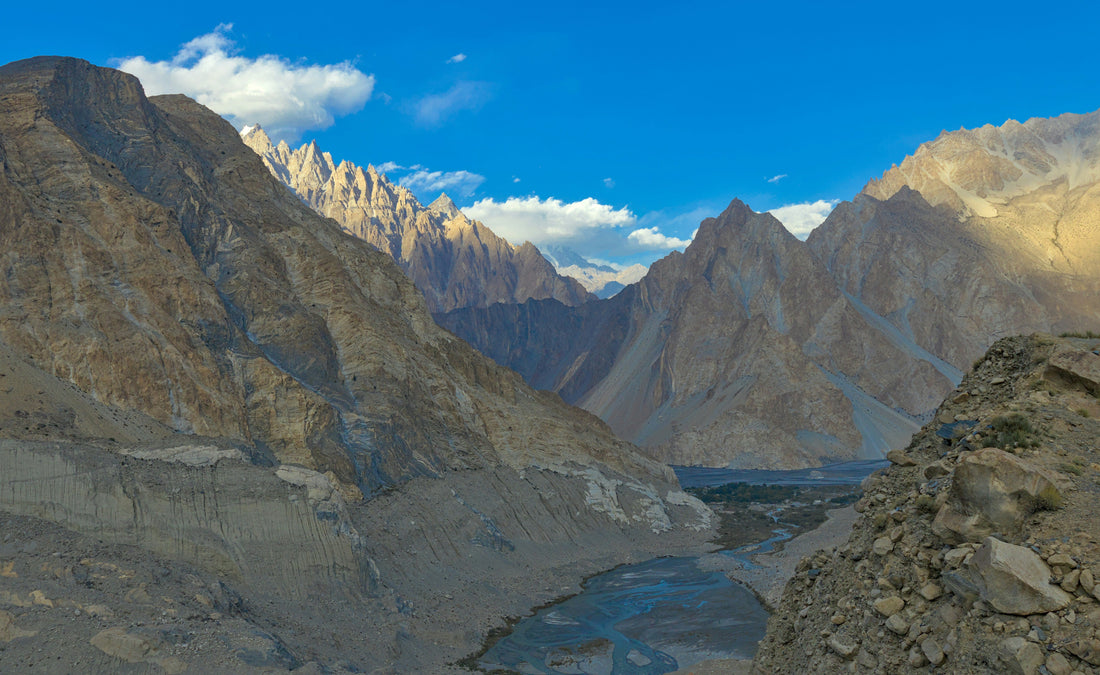
The Border that Decides Luxury: Afghanistan, Pakistan and the Real Cost of Rarity
Share
In the high-end gemstone market, rarity is often framed as intrinsic beauty. Yet true exclusivity does not begin at the jeweller’s bench or in the cutting workshop. It begins earlier, in the geography of access. Many of the world’s most coveted tourmalines originate in a corridor shaped not only by geology but by geopolitics: the frontier between Afghanistan and Pakistan. Understanding this region is essential to understanding why the finest stones do not circulate freely and why access, rather than price, is increasingly becoming the defining marker of luxury.
In recent weeks, the frontier has again experienced a rise in instability. Several international outlets have documented increases in cross-border hostility, with reports of casualties and disrupted crossings, including coverage of deadly incidents along the frontier as described in reporting on border clashes by The Guardian. Attempts at mediation have taken place, including Doha-based talks to extend a ceasefire documented by Reuters. Even after those talks, local authorities issued statements accusing the other side of renewed violations, a development noted by Al Jazeera. Earlier updates also referenced a ceasefire announcement after the deadliest confrontations in years as reported by AP News.
What appears externally as supply fluctuation is, on the ground, a reflection of these political realities. Stability determines whether goods can physically leave mining regions, whether they can cross high-altitude routes and whether a dealer can operate at proximity. The scarcity of Afghan stones is therefore not primarily a matter of extraction volume but of circulation capacity. Every valley has its own risk profile, every pass its own shifting permission structure and the difference between theoretical supply and actual availability is determined by who can move, and when.
This is the hidden foundation of exclusivity. The international gem trade often portrays provenance in abstract cultural language, focusing on colour classification, inclusions or cutting tradition. Yet provenance is, above all, logistics. Traceability is not just a document but a route. The further one is from the terrain, the easier it becomes to imagine sourcing as frictionless, predictable and administratively manageable. Those illusions dissolve immediately upon contact with the real geography of origin.
Our position in this landscape is defined not by scale but by proximity. We work with trusted partners on the ground who maintain a stable local presence in the terrain where supply originates. That presence determines continuity of access and the ability to evaluate material before it passes through speculative intermediaries. It protects provenance by reducing the distance between source and buyer. It also creates an ethical gradient that is difficult to replicate at arm’s length. When sourcing is relational rather than purely transactional, value is grounded in knowledge rather than in generic paperwork.
Because tourmalines from Afghanistan must move through a frontier governed by shifting permissions, each moment of relative calm widens the corridor through which stones can travel. Conversely, any rise in tension narrows that corridor. What appears to Western markets as a fluctuation in inventory is, in fact, a fluctuation in viability. This is why no major auction house, no cutting centre in Bangkok or Jaipur and no Western jewellery maison can separate luxury from geopolitics. The material history of a stone is inseparable from the geography through which it travelled.
Understanding this also clarifies why true Afghan material does not flood the market. Access is self-restricting by nature. The frontier functions as a natural economic filter, allowing only those with durable relationships and real presence to maintain continuity during periods of uncertainty. In a market saturated with marketing language, that is the strongest form of scarcity that exists.
For collectors and designers operating at the highest level, the implications are direct. The value of a gemstone is not only mineralogical but infrastructural. Colour, clarity and size distinguish a stone, but continuity of access distinguishes a supplier. Companies that remain closest to origin will, over time, define which materials remain available to the global market and which become museum-level rarities. When sourcing requires resilience, exclusivity becomes a function of proximity.
This is the real cost of rarity. It is not the price paid at the final transaction, but the conditions that make the transaction possible in the first place. The frontier does not merely divide two countries. It divides two models of luxury. One depends on narrative distance. The other depends on operational reality. The first speaks about scarcity. The second works within the conditions that produce it.
Afghan tourmalines are more than geological marvels. They are testimonies of navigation, negotiation and presence in a landscape where access is never guaranteed. The most valuable attribute of these stones is not only the brilliance of their colour but the fact that they have crossed a frontier that few will ever see and even fewer will understand. That is the dimension of luxury that cannot be replicated.



